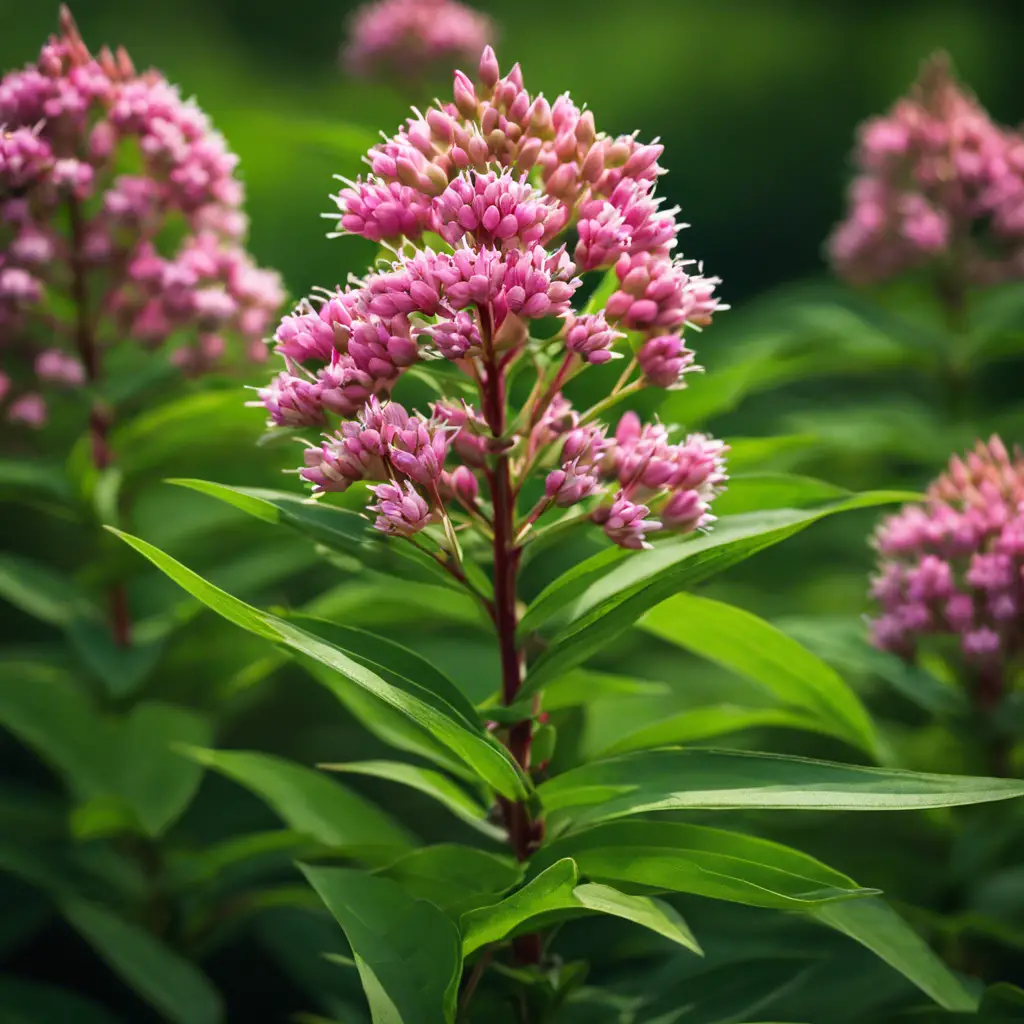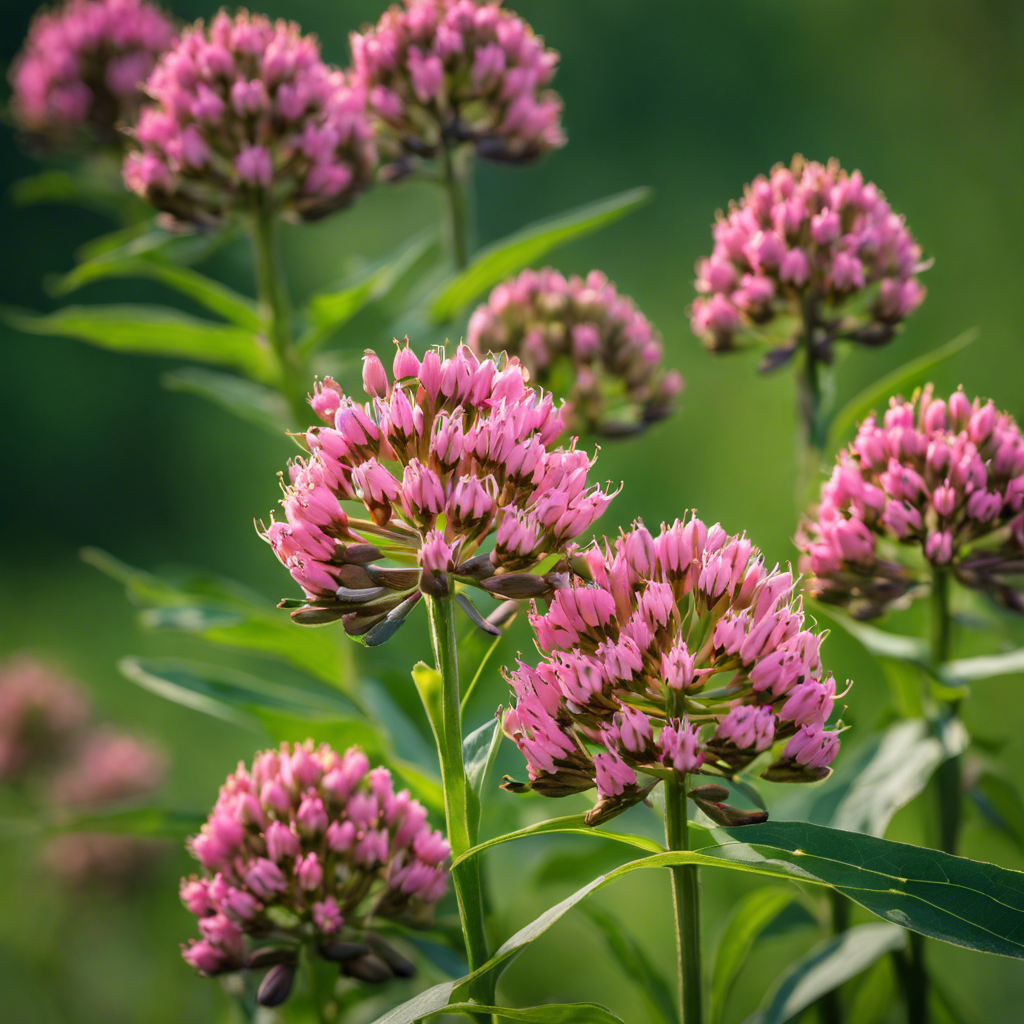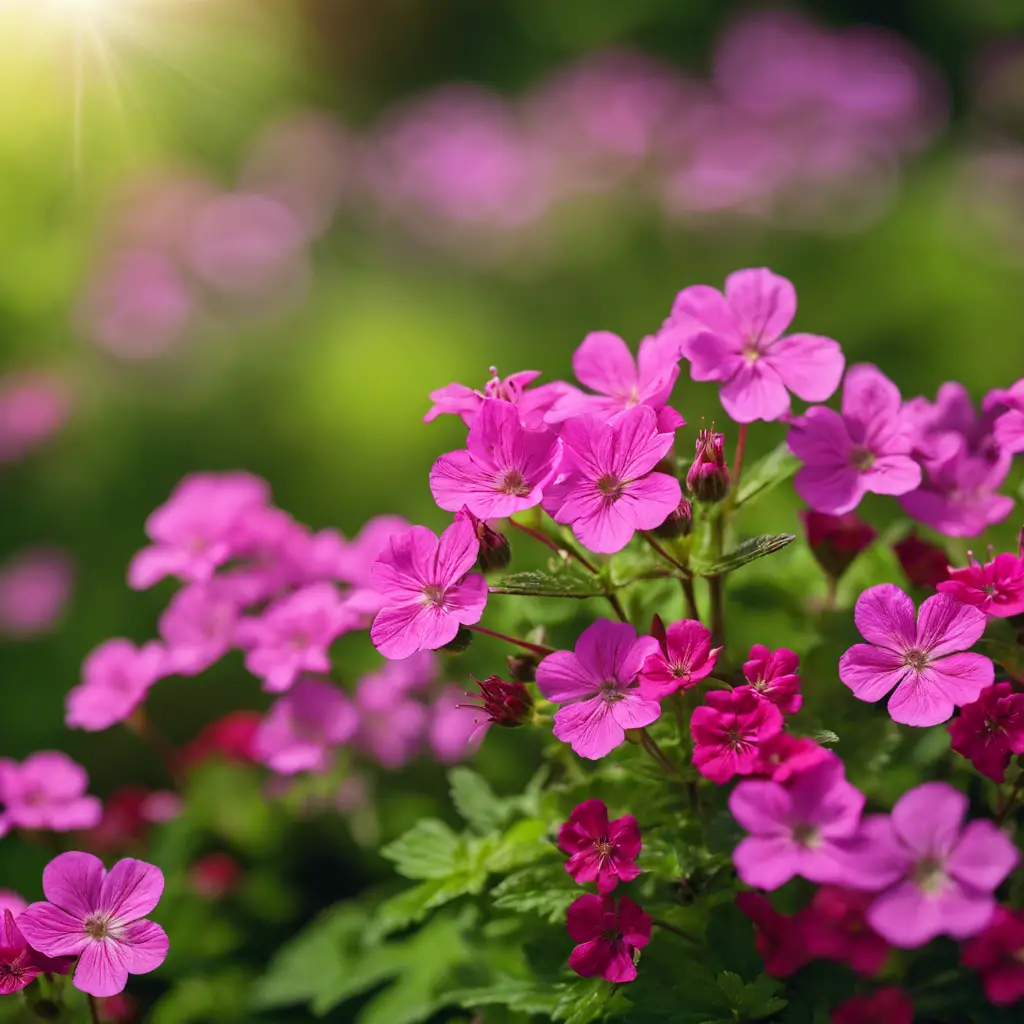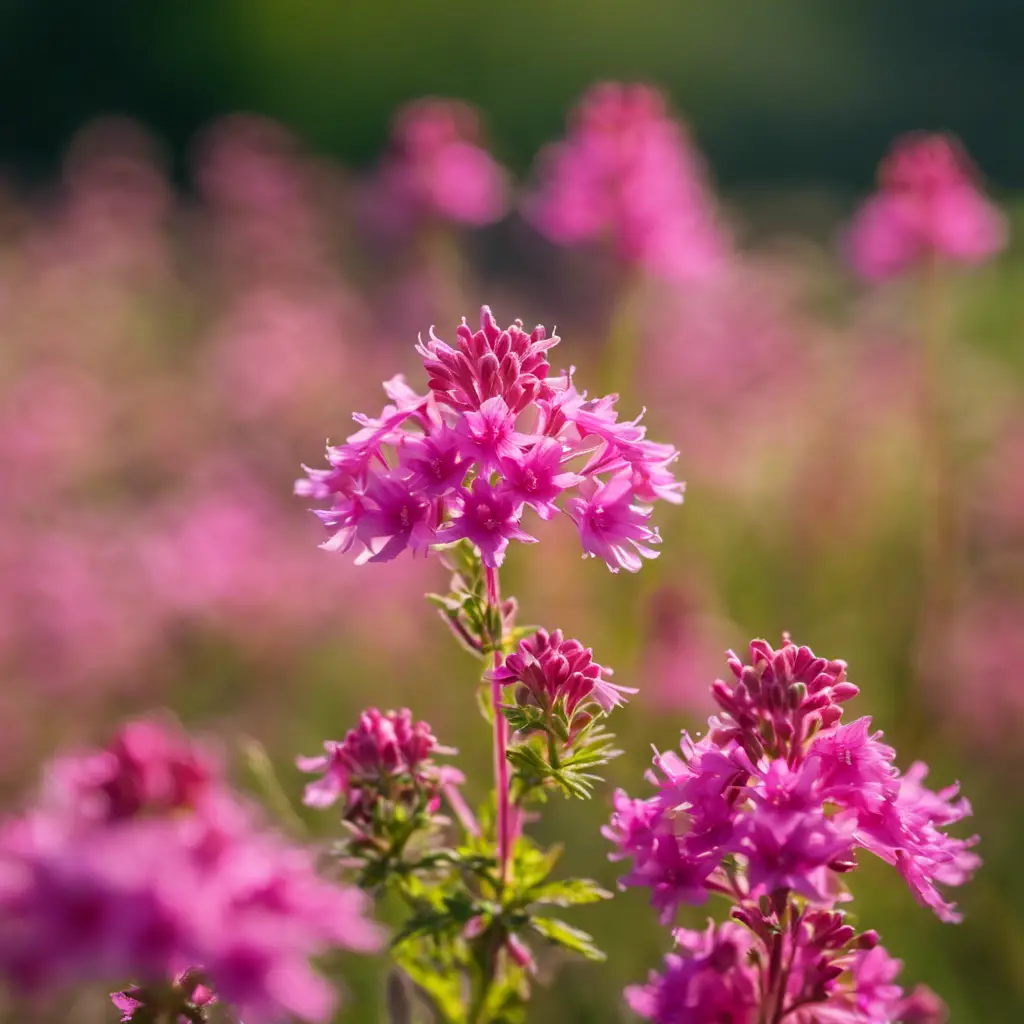Growing up in Pennsylvania, my love for nature and wildflowers was nurtured by the lush landscapes surrounding me. My experience studying botany has deepened my appreciation for the delicate Pink Ladys Slipper and the vibrant Fireweed that grace the state. I believe that these pink wildflowers not only add a pop of color to the countryside but also play a crucial role in the ecosystem.
As I wander through the woods, each encounter with these blooms feels like a magical connection to the natural world around me. Pennsylvania’s diverse ecosystems provide the perfect backdrop for these beautiful wildflowers to thrive.
Key Takeaways
- Swamp Milkweed and Common Milkweed attract butterflies, crucial for biodiversity.
- Spreading Dogbane and Crown Vetch are pink wildflowers attracting pollinators and suitable for landscaping.
- Sweet Joe Pye Weed in Pennsylvania gardens attracts bees and butterflies, adding vibrant color.
- Pink wildflowers like Swamp Milkweed, Common Milkweed, Spreading Dogbane, and Sweet Joe Pye Weed thrive in Pennsylvania’s diverse ecosystems.
Swamp Milkweed

Swamp Milkweed, also known as Pink Milkweed, captivates with its vibrant pink flowers, attracting butterflies with its nectar-rich blooms during the summer months in Pennsylvania.
Asclepias incarnata, a perennial plant native to Pennsylvania, serves as a crucial component in the state’s biodiversity by supporting pollinators.
This stunning wildflower can reach heights ranging from 24 to 72 inches, creating a striking presence in gardens and natural landscapes.
The nectar-rich flowers of Swamp Milkweed not only add beauty to the environment but also provide a vital food source for butterflies, enhancing the overall ecosystem.
Observing these pink blooms fluttering with butterflies highlights the intricate relationship between native flora and fauna, underscoring the importance of preserving such species in Pennsylvania.
Spreading Dogbane

With its clusters of small, pink, bell-shaped flowers, Spreading Dogbane, scientifically known as Apocynum androsaemifolium, attracts butterflies and other pollinators to Pennsylvania’s wildflower gardens. This perennial, also called Fly-trap Dogbane or Bitterroot, thrives in USDA Hardiness Zones 2-9 and can grow to be 24-60 inches (61-152 cm) tall.
Here are some key points about Spreading Dogbane:
- Known for its pink, bell-shaped flowers that add a touch of beauty to wildflower gardens.
- Attracts butterflies and pollinators, contributing to the ecosystem.
- Adaptable to a wide range of climates within USDA Hardiness Zones 2-9, making it a versatile choice for Pennsylvania gardens.
Crown Vetch

Crown Vetch, scientifically known as Securigera varia, is a versatile pink wildflower commonly found in Pennsylvania’s natural landscapes and gardens. Also referred to as Purple Crownvetch, it thrives in USDA Hardiness Zones 3-9, reaching heights of 12-72 inches (30-183 cm).
This perennial plant displays beautiful pink blooms, adding long-lasting beauty. Crown Vetch is a popular choice for erosion control and ground cover due to its ability to form dense mats, preventing soil erosion effectively. Its adaptability to a range of conditions makes it a resilient and attractive option for landscaping.
Gardeners appreciate its low maintenance and ability to thrive in various environments, making it a valuable addition to both formal gardens and natural settings in Pennsylvania.
Common Milkweed

The Common Milkweed, scientifically known as Asclepias syriaca, is a vital perennial wildflower native to Pennsylvania, thriving in USDA Hardiness Zones 3-9.
Common Milkweed can reach heights of 36-96 inches, boasting clusters of fragrant pink flowers in the summer.
This wildflower attracts butterflies, particularly the iconic monarch butterfly, making it an essential plant for supporting pollinators.
Common Milkweed is commonly found in meadows and open fields, where its milky sap serves as a food source for monarch butterfly larvae, aiding in their development.
Pennsylvania’s landscape is enriched by the presence of Common Milkweed, not only for its beauty but also for its critical role in supporting local ecosystems and the fascinating world of butterflies.
Sweet Joe Pye Weed

Sweet Joe Pye Weed, scientifically identified as Eutrochium purpureum, enchants with its vibrant pink blooms that grace Pennsylvania’s landscapes from summer into fall. This perennial plant, suited for USDA Hardiness Zones 3-9, can reach heights of 24-96 inches.
The striking pink flowers of Sweet Joe Pye Weed act as beacons for butterflies and bees, adding life and color to gardens. Sometimes referred to as Purple Joe Pye Weed, this wildflower stands tall and proud, making it a standout in wildflower gardens across Pennsylvania.
Its ability to attract pollinators while providing a visually captivating display makes Sweet Joe Pye Weed a must-have for those seeking to enhance their outdoor spaces with native flora.
Trumpetweed

In Pennsylvania, the majestic Trumpetweed, scientifically known as Eutrochium fistulosum, stands tall and proud, inviting admiration with its range of pink blooms that attract pollinators to the garden. This pink wildflower, also called Joe-Pye Weed or Queen of the Meadow, thrives in USDA Hardiness Zones 4-10. Here are some key points about Trumpetweed:
- Trumpetweed can grow to an impressive mature height of 24-144 inches (61-366 cm), adding a dramatic and elegant presence to any landscape.
- The pink blooms of Trumpetweed bloom from late summer to early fall, providing a burst of color in Pennsylvania gardens during this period.
- Known for attracting butterflies and bees, Trumpetweed contributes to the vibrant ecosystem of your garden.
Frequently Asked Questions
What Is the Pink Wild Flower in Pennsylvania?
In Pennsylvania, the pink wildflower you seek is Swamp Milkweed, scientifically known as Asclepias incarnata. Standing 24-72 inches tall, this beauty, also called Pink Milkweed, graces the landscape with its vibrant hues.
What Is the Pink Wildflower Called?
In Pennsylvania, the pink wildflower is known as Swamp Milkweed (Asclepias incarnata). This beautiful plant adds color to wet areas and attracts pollinators with its vibrant blooms. Keep an eye out for these lovely flowers!
What Are the Pink Flowers Along Highways?
You’ll find a variety of pink flowers along highways in Pennsylvania, such as Swamp Milkweed, Crown Vetch, and Pink Ladys Slipper. These blooms not only add beauty but also attract pollinators like butterflies and bees.
What Is the Most Pink Flower?
When seeking the most pink flower, consider the diverse Pink Wildflower species, ranging from delicate pastels to vibrant magentas. These blooms attract pollinators, enhancing landscapes with their colorful beauty and can be found in various natural habitats.
Conclusion
In conclusion, Pennsylvania’s diverse array of pink wildflowers, such as Swamp Milkweed, Spreading Dogbane, Crown Vetch, Common Milkweed, Sweet Joe Pye Weed, and Trumpetweed, not only enhance the beauty of the landscape but also play a crucial role in supporting pollinators and wildlife.
These vibrant blooms provide essential habitats and contribute to the overall biodiversity of Pennsylvania’s ecosystems. Appreciating and protecting these wildflowers is essential for preserving the natural beauty and ecological balance of the state.

An avid ornithologist, zoologist and biologist with an unwavering passion for birds and wild animals.
Dr. Wilson’s journey in ornithology began in childhood and led him to obtain a Ph.D. in Ornithology from the prestigious Avian Research Institute. He has worked closely with renowned experts in the field and conducted extensive research and field studies globally.
